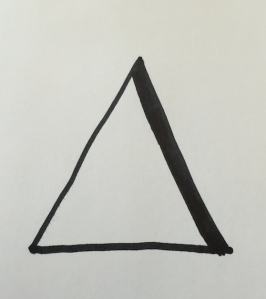
(The most finely tuned skill in advertising…and life)
In this ever-shifting world it is deliciously tempting to change everything all the time. Human nature is smitten with things that are new. People assume if it’s new, it must be cooler, more advanced, better. In many cases that’s true, but in many cases, that’s absolutely untrue. Often times, we get new for new’s sake.
By no means is this an entreaty to stay stuck in the same ways over and over again. We must develop the delicate ability to understand what should change and what should not, and refuse to get caught up in the blind, sweeping momentum of change where people chase the latest ephemeral nonsense whether it merits pursuit or not; where “old” automatically means bad, and “new” instantly equals good.
There are many reasons why people “over change” in business. The first reason is because they can. Change is there for the taking. Let’s do it, let’s change, let’s do something different because doing the same thing is boring…even if it works brilliantly. The second reason: because I’m new. New people always want to change things. That’s why they showed up. Change is the way they leave their mark. Third: the impact of those three little letters N-E-W. “New” remains the second most powerful word in marketing, behind only the king of all words, “Free.” Lastly, and most importantly, people change because they lack a clear understanding of and respect for the deep-rooted unchangeables of a brand.
Here’s how I think the change dynamic works in advertising.
I see marketing on a continuum from brand essence to strategy to campaign to execution. The closer to brand essence, the less you change. The closer to execution, the more you change.
Key elements that define the brand should almost never change. Every company has their version of these…brand essence wheels, brand pyramids, brand arrows, mission statements. These are the principles that stand for generations, why they founded the company, the images inextricably linked to the brand. If these are to change, one random person cannot do it on a capricious whim. 11 keys should turn to launch that missile. Strategy should be well conceived (measure twice, cut once), then stuck with until it no longer works, or it wears out. Campaigns that support the strategy can change more often, so long as they are always true to the strategy. Geico is a great example of this. From the Cavemen to the Gekko to the “Happier Than” to the current “It’s What You Do,” the campaigns have changed, but the strategy has remained constant: 15 minutes could save you 15%. Executions should change regularly and often. That’s the whole point of “executions,” especially in today’s real-time world. Take some shots, do some analytics; use what works, dump what doesn’t.
So next time you’re faced with a decision to change something or not, ask yourself a simple question: am I changing this because it should be changed or because it can be changed. If the answer is the latter, don’t do it, then turn your attention to something that needs to be changed…because there’s always something.
Rob Baiocco, CCO, The BAM Connection
rob@thebam.com
TheBamThinks #20

Simple –// “everything old is new “
Edited excerpt: “… refuse to chase the latest ephemeral nonsense; where “old” automatically means bad, and “new” instantly equals good.” Reminds me of TV’s Banacek, who when receiving criticism for collecting antiques said, “There’s a much greater chance of old things being better than new ones, if only because there are so many more of them.”